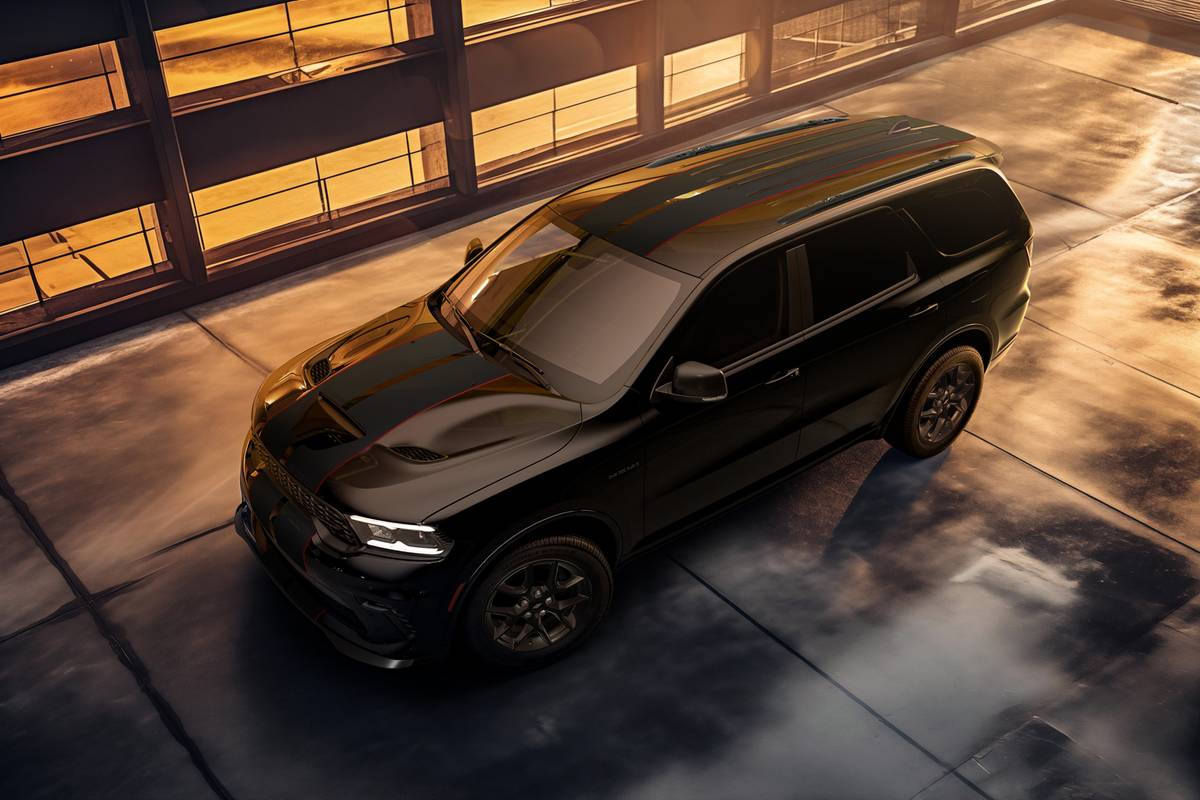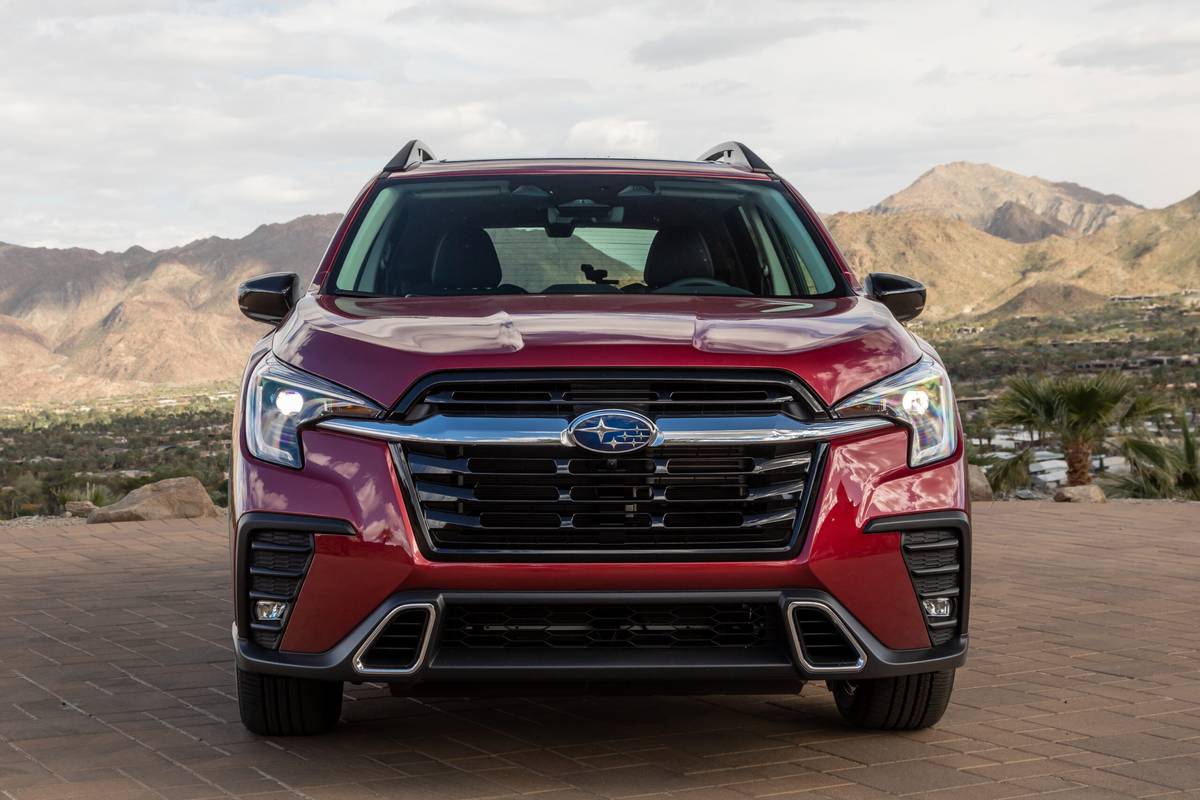chicagotribune.com's view
A colleague spotted the sport-utility vehicle in the parking lot and asked:
“How do you like the Lincoln Navigator?”
If the folks from Ford Motor Co.’s luxury Lincoln division could have heard her question, they probably would have shed tears of joy, because it wasn’t a Navigator, it was the new 2003 Lincoln Aviator.
What was expected to be no more than a dolled-up derivative of the midsize Ford Explorer and Mercury Mountaineer sport-utility vehicles, comes across as a dolled-up full-size Lincoln Navigator, in slightly more economical size.
“It’s a seven-eighths scale model of the Navigator and shares its DNA,” said Mark Politte, Aviator marketing manager.
And it comes assembled.
Aviator shares the big, bold, thickly chrome-accented grille, quad headlamps and rounded fog lamps outside and the yards of leather and pounds of burl walnut and satin nickel trim inside Navigator.
Credit the designers for not allowing it to look like a dolled-up Explorer or Mountaineer, the midsize SUVs with which it shares platforms.
But, while it shares the Navigator look, it also comes close to sharing the window sticker.
Aviator comes in base Luxury and top-of-the-line Premium versions with a choice of two-wheel- or all-wheel-drive. We tested Aviator with AWD in Premium garb, and the sticker read $45,125 before options. A base model 4WD Navigator starts at $51,500.
Why $45,000 and how long before it reaches $50,000?
Of course, why one more luxury Lincoln SUV?
“It’s an alternative for those intimidated by Navigator size and the perception you have to put up with tough driving dynamics in a large SUV. The smaller Aviator will be perceived as more athletic and easier to maneuver and park,” Politte says.
Not just a perception. Aviator’s gas shock suspension is tuned to deliver the ride and handling of the Lincoln LS sedan and complemented with 17-inch performance radial tires. The ride is firmer but the handling more precise than in the bigger Navigator, which cushions you more in up-and-down movement, but thus tends to lean more in corners and turns.
Navigator is get in and relax, Aviator is get in and run, a more nimble, agile performer that happens to be a sport-utility vehicle.
In December Aviator will be an even better performer when Advance Trak becomes available as an option.
It’s a traction/stability control system with yaw sensors to control lateral movement and counter understeer or oversteer problems.
Aviator is targeted at a mid-40s audience attuned to performance driving, and Navigator is geared toward those in their early 50s concerned more with lap-of-luxury cruising.
This is why Aviator comes with a 4.6-liter, 302-horsepower V-8 and Navigator a 5.4-liter, 300-h.p. V-8.
Though Aviator and Navigator look alike, the engines are another reason they don’t act alike. Aviator’s 4.6-liter delivers 300 fo ot-pounds of torque, 90 percent of it at only 2,000 r.p.m. for rapid off-the-line launch, and Navigator’s 5.4-liter delivers 355 foot-pounds of torque for heavy-duty hauling and towing.
Luxury and Premium editions are 4 inches longer and 4 inches wider than Explorer/Mountaineer. Premium also has a little more equipment–high-intensity discharge headlamps, automatic climate control, a premium audio system with six-disc in-dash changer and alloy wheels.
And heated and cooled seats with a choice of warm or cool air filtering through the perforated leather to serve you winter or summer.
Not offered, however, are two of the main attractions on the Navigator, power running boards that slide out for easy entry when you open the door and retract when you close the door, and a power third-row seat that lowers into the floor and rises at the touch of a button.
Of course, imagine the sticker if those were available!
Like Navigator, Aviator has a ird seat, but with a manual release handle rather than a power button. Second-row seat backs also fold down to hold more cargo, but when folded, there’s a gap between the second and third row that items can slip into.
A platform on the back of the third-row seat slides forward to close the gap, but falls a tad short when you opt for second-row bucket seats with a huge console between, rather than the no-added-cost bench seat without the protruding console.
While second- and third-row seat backs fold, the third-row backs don’t lie flat unless you remove the seat cushion. To do so you have to pull floor levers on each side–and then find a place to store the cushion. A lot of busy work to get the floor flat.
Head and arm room is spacious in the third seat, but your legs can’t wander far. And that seat bottom cushion is very thin to make it light enough to remove when creating the flat cargo floor.
As for safety items, Aviator comes with dual-stage front bags with sensors to determine how close occupants are, how much they weigh and whether they are belted or not to gauge proper inflation speed.
There’s also side air-bag curtains for front- and rear-seat occupants with sensors to keep the curtains inflated longer in a rollover. The curtains also cover the side windows to prevent occupant ejection.
And four-wheel anti-lock brakes are standard.
Neat features include storage compartments built into the front door bottoms and armrests; power adjustable pedals to compensate for different driver heights; plastic lower body/wheel well cladding to prevent parking lot and roadway debris dings; a keyless entry-coded keypad on the door, a demand from golfers who don’t want to carry keys on the course; and reverse sensing aid, sonar sensors in the rear bumper that sound an alert when someone or something is behind when backing up.
A must-have feature for those with kids is the $1,295 DVD entertainment system with 7-inch-wide screen that lowers from the roof for watching movies or playing games to keep the little ones content on long trips. The system also comes with headsets and a roof-mounted case to store DVDs.
Besides Advance Trak, the navigation system from the Lincoln LS will be added as an option on Aviator, along with an optional tire-pressure monitoring system, in December.
A couple gripes. The outside mirrors have a vertical design so they don’t offer the side vision of wider, horizontal mirrors.
And for some reason, the AWD Aviator carries no badge identifying that all-season driving feature. Maybe not a big point when Aviator is new and the window sticker proves this is an AWD version, but cause for concern when used and you need to ensure you are getting AWD. Simply look under the vehicle to see the AWD hardware for yourself? Most consumers can’t ID a spark plug, much less a drive shaft.
Politte expects sales of 35,000 Aviators annual ly. And because 60 percent of Navigator buyers are new to the Lincoln brand, he estimates 70 percent of the buyers for the smaller, lower-priced Aviator will be new to Lincoln.
Latest news



